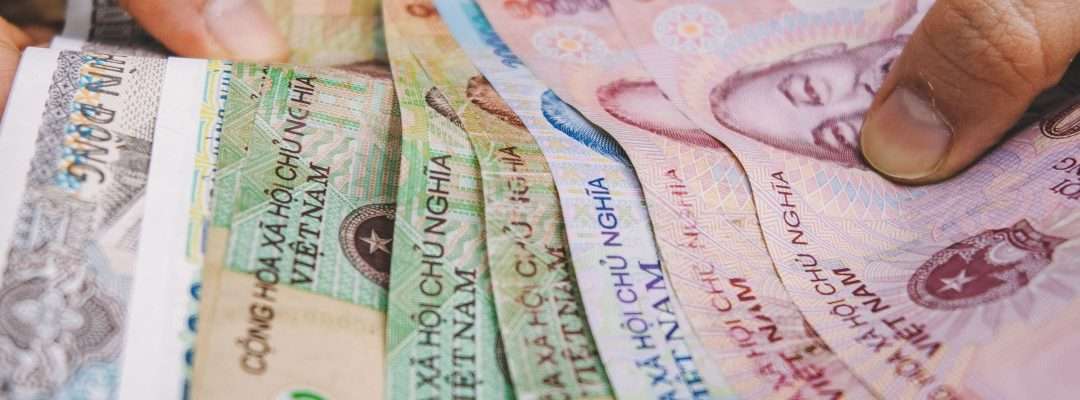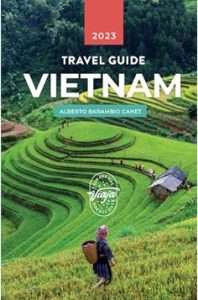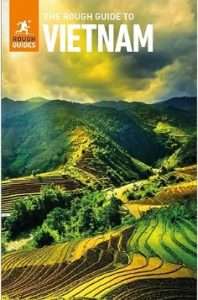For those of you who’ve been following us for a while, you know we’ve lived in Vietnam on and off for many years. So, as you’d imagine, we’re quite familiar with the Vietnamese Dong (VND), one of the more humorous-sounding national currencies. Here are a few things about the currency of Vietnam and costs you might need to know before you head over to Vietnam.

We use our WISE Borderless account and debit card to access and manage most of our money while traveling overseas. You can read more about why in our Case Study on Wise Vs PayPal.
It’s completely FREE to open either a business or personal account, and this Link will give you a fee- free transfer up to $1000.
Vietnamese Dong – Rates and Denominations
The currency of the Democratic Republic of Vietnam is called the “Vietnamese Dong.” It is issued by the State Bank of Vietnam and represented by the letters VND in any of the Currency Exchange calculators.
VND to USD
The State Bank of Vietnam supports monetary stability, but the currency, like many others, has depreciated against the USD.
The exchange rate currently (2023) hovers around 24,000 Vietnamese dong for $1 USD. (Or reversed: 1 dong equals 0.0041 cents!) When we first arrived in 2011, Approximately 20,600 dong equalled 1 USD. So it’s come down about 16% over about 13 years.
Other Currency Pairings
All the other international currencies such as the Australian Dollar (AUD), Euro (EUR), British Pound (GBP), Canadian Dollar (CAD), and Singapore Dollar (SGD) tend to fluctuate relative to the VND rate against the United States Dollar.
For current Exchange Rates Click Here
Vietnamese Dong notes come in the following denominations:
-
- 500 000 (~20 USD),
- 200 000(~8 USD),
- 100 000 (~4 USD),
- 50 000(~2 USD),
- 20 000 (~80 cents),
- 10 000(~40 cents),
- 5000 (~20 cents),
- 2000 (~8 cents),
- 1000 (~4 cents) and
- 500 (~2 cents).
VND Banknotes
All larger amounts including 10,000 VND and above are polymer banknotes. The 1000, 2000, and 5,000 VND notes are paper.
Rarely will you see any of the 500 notes. And, you may receive a candy in your change at the supermarket in lieu of these.
VND Coins
Vietnamese Dong coins used to come in the following denominations but are very rare to come by.
5000, 2000, 1000, 500 and 200 VND.
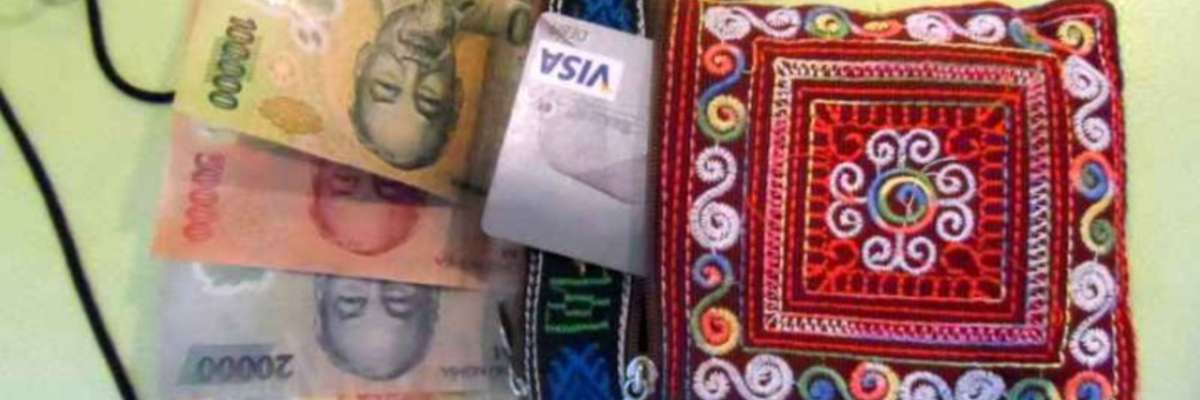
Common Mistakes by Newcomers when using Vietnamese Dong
For newbies, it can take a bit of getting used to all those zeros on the Vietnamese Dong. Common mistakes include mixing up:
-
- the 100 000 and the 10 000 (both greenish and similar numbers)
- the 500 000 and the 20 000 (both bluish), and
- the 200 000 and 10 000 (very similar in colour).
Most people are honest and will point out your mistake. But I have heard of street vendors scarpering quick smart before the unlucky tourist notices after being handed the wrong note . And taxi drivers who quickly palm the big note and give change for the smaller denomination.
Vietnamese bank notes 10,000 VND and above are made of a polymer. These can often stick together. Make sure you “flick” the notes as you count them. Otherwise, you might end up paying double.
Outside the Tourist areas, a 500 000 dong note can be extremely hard to change unless you are buying something substantial.

How to Access Vietnamese Dong in Vietnam
Taking Money to Vietnam/Exchanging Money in Vietnam
There is no need to buy Vietnamese Dong before you enter Vietnam. And if you do, you’ll probably get a terrible rate. (If Australian banks are anything to go by.)
If you are from Australia, the UK, Europe, Japan, or China OR traveling via Thailand, Singapore, or Malaysia, there is no advantage in changing your money into USD before you come.
Exchange rates will be proportionate to your country’s exchange with USD and you will save the double conversion spread.
We recommend taking a combination of cash and cards. It is easy to exchange banknotes of major currencies such as USD, Euro, GBP, AUD, CAD, SGD, etc. With lesser-known currencies such as the Bangladeshi Taka, Mexican Peso, or Kazakhstani tenge, you may want to exchange them for one of the major currencies such as USD before you come.
Once you’ve arrived, it’s extremely easy to exchange money INTO Vietnamese Dong (VND) in Ho Chi Minh City. All banks, money exchanges, most travel agents, and hotels will happily exchange your USD and other major currencies.
If you change anywhere other than an official exchange or a bank, rates may be slightly lower. Should you receive inflated quotes from individuals to buy Vietnamese Dong, it may potentially be a scam. However, it’s not unusual for locals to offer competitive rates to acquire “hard currency” without having to jump through administrative hoops and pay high exchange fees.
Changing the Vietnamese Dong back to another currency is slightly more difficult. Usually, you can do this at an official exchange office or the airport. People may recommend you buy dollars in gold shops at local markets. However, I’m not sure if this is strictly legal and I’ve heard of semi-regular crackdowns.
When I arrived in Ho Chi Minh City in April 2014, the rate at the official airport exchanges was slightly better than that in the areas surrounding the major tourist centers so it would make sense to change some up when you enter the country.
Nowadays, I just use the ATM in arrivals and withdraw an ‘odd’ amount so I get some smaller notes. For example: get 3.9 million rather than 4 million.
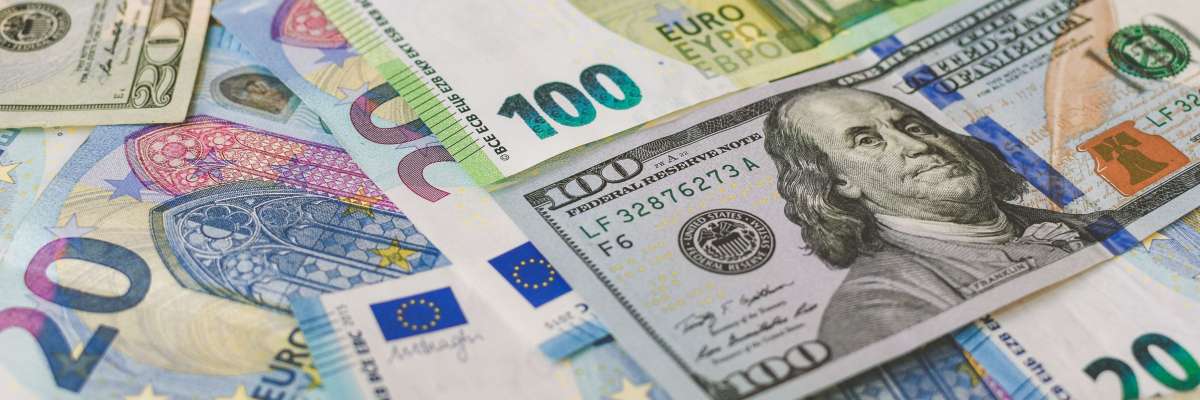
ATM’s that Dispense Vietnamese Dong.
There are ATMs everywhere in HCMC that dispense Vietnamese Dong and many will accept international cards. Vietnamese banks that accept foreign cards include Vietcom, Sacombank, Vietin, Agribank, and Technobank. The most common foreign bank ATMs are HSBC and Citibank. Although you’re unlikely to find either of these outside the major cities.
Most Vietnamese Bank ATMs will have a maximum withdrawal of 4-5 million Vietnamese dong (~2-250 USD) but you can make multiple withdrawals until you hit your own bank withdrawal limit. Be aware you may be being hit by a foreign ATM fee every time you make a transaction. Citibank allows withdrawals of up to 9 million dong (~450 USD). So using their machines is a better option if you are withdrawing a large amount of cash.
Note that some ATMs will dispense 100 or 200,000 VND as the largest denomination. Even the biggest note (500 000 VND) is the equivalent of only $25. Draw out more than a couple of hundred bucks and you are going to end up with quite a pile of cash.

Using Credit and Debit Cards in Vietnam
Vietnam, especially in the larger cities, has embraced the cashless society. Most convenience stores, bars, and restaurants will take international credit and debit cards and some payment apps on your phone.
However, you may still need cash in smaller denominations for many day-to-day expenses. For example, street food vendors, Xe Om/motorbike taxis, and tips.
We have a FREE – WISE Borderless account and debit card to reduce foreign exchange costs and international banking fees. It works well in Vietnam and you can even set up a VND currency account so you can do low-cost bank transfers to locals and businesses. Check them out HERE. It also gives us free cash withdrawals of up to 250 GBP/month (~7,500,000 VND)

Some Typical Costs in Vietnam
Your money will go much further in Vietnam than in most Western countries. The exception is for imported goods. As with most countries, large cities are more expensive than smaller towns and villages for things like food and beverages, accommodation, and transport. Typical questions we get asked include:
Is $100 a lot of money in Vietnam?
The answer is YES (and no!) The average monthly salary in June 2023 was 7.9 million dong, which equals ~320 USD. So $100 is almost a third of that. On the other hand, Vietnam has a rising middle class, and plenty of extremely rich people too. $100 won’t go far in the many high-end restaurants, resorts, and luxury stores.
What can you buy with 1 million Dong?
Being a millionaire in Vietnam isn’t that hard. After all, it’s only around 40 USD. But that can go a long way. Budget travelers could easily survive on less than that per day for accommodation, food, transport, and tours. I’ve added some examples of costs below.
Accommodation Costs
You can spend very little per day in Vietnam. Or you can spoil yourself rotten with 5-star luxury for much less than you would spend in Western countries. (Or indeed, many other Asian Cities.) As with most countries, the big cities are more expensive than smaller towns and rural destinations.
Vietnamese accommodation options start from as little as $10/night in a hostel dormitory, A cheap hotel is around $15-20 for a double. A decent mid-range hotel in a central location, around $25-40. And all the big international brands are there too if you want a bit of luxury. Click HERE for more information on the tools we use to find accommodation.
Food Costs
Vietnamese Street Food is some of the best you’ll ever eat. You can easily live on less than $7 USD a day if you stick to local vendors. At the other end of the scale, less than $50 will get you a sumptuous buffet at a 5-star hotel.
Alcohol Costs
The cost of buying a beer in Vietnam varies considerably. But even in the poshest hotels, you would be hard-pressed to pay more than $6 for a glass of one of the Vietnamese commercial Beers. A local Saigon Green, Bia Hanoi, or Huda (Hue and Danang) can be purchased for less than 20,000 VND (75 c) in many of the small bars in backpacker areas like Bui Vien in Saigon or Beer Street in Hanoi. Although a more established bar is likely to hit you up for a massive 25-40 000! (< $2). Beer Hoi (or fresh/draft beer) is even less. Spirits can be consumed for around $3/ drink and cocktails less than $5. Decent wine is a lot harder to come by in the cheaper places and anything imported will be at least $3 to 5 for a glass. (I’m not a big fan of Vietnamese wine personally but it is a lot cheaper.) Vietnam’s craft beer scene is booming, and you can pay up to 7 or 8 USD for the more expensive brands.
Transport Costs
Transport is cheap and it shouldn’t cost you more than $3 for short ride. A taxi from the airport in Saigon is around 200,000 VND ($8). A bit more in Hanoi as it’s so far out of town.
Xe Oms (motorbike taxis) are even cheaper. Grab, and Goviet are cheaper than traditional XeOms, you won’t have to haggle, and the apps remove all the language difficulties.
A city bus will typically cost you less than 20 cents to get across Saigon, The buses are fairly comfortable and there’s an App for planning your journey.
Most tourists, however, usually stick to taxis and Motorbikes because they are so reasonable.
Phone Credit
Phone Credit – I usually pick up a local SIM on arrival at the airport. Between 200-300K VND will get you plenty of data and calls for a month. (and decent wifi is common in all but the most rural destinations.)
If you want to buy a SIM card before you arrive and your phone takes an eSIM, AirAlo has a range of suitable products for Vietnam and Southeast Asia. These are useful if you’re arriving at the airport at odd hours, over a land border, or moving on to other nearby countries.
Total Costs
Including cheap and free tours, a rock-bottom budget traveler could get away with less than $30/day possibly $20. A mid-range budget would be around $45/person per day. And the skies are the limit for 5-star luxury. Although $100-120/day will see you living pretty well compared to what you’d get in most other countries.
I use Numbeo to help estimate costs when working out our budget for different destinations.
Check out these guides on Amazon for more tips to save money while visiting Vietnam.
Vietnam Travel Guide
Traveling to Vietnam but don’t know where to start? This travel guide has everything you need to start planning your adventure in this amazing country.
Lonely Planet Vietnam
Lonely Planet’s Vietnam is your passport to the most relevant, up-to-date advice on what to see and skip, and what hidden discoveries await you.
Rough Guide Vietnam
A practical travel guide to Vietnam featuring detailed travel tips and points of interest, lists of all iconic must-see sights, and off-the-beaten-track treasures.
Heading to Vietnam Soon?
Check out our Travel Resource pages before you start planning and booking. Everything you need in one place to save you money and travel better.
And more…
Book Your Flight
Use WayAway to find cheap flights. They are our favorite search engine because they search websites and airlines around the globe. (Including the tiny budget ones many other search engines ignore.)
Book Your Accommodation
To find the best deals and book most of our accommodation (when we’re not housesitting,) we use:
-
- WayAway
- Booking.com, and
- Agoda
If you are more into Hostels, then Hostelword is the biggest platform for those.
Don’t Forget Travel Insurance
Travel insurance will protect you if anything goes wrong before or during your trip. We never travel without it and have needed it many times. We’ve used a few companies with excellent results over the years.
Consider:
- Covermore (Australians)
- Safety Wing (All nationalities. Great for long-term travelers and Digital Nomads.)
- World Nomads (All nationalities. Great for long-term travelers and Digital Nomads.)
- Visitors Coverage (to see a more extensive range of available plans from different providers, including policies for over 60’s.)
Disclosure: Note that some of the links and advertisements on this page lead to products from our partners. If you buy something after using those links, we may earn a small commission from the sale. However, you have our assurance that you won’t pay any more than you would by buying directly from their site. And we promise to only link to products or companies we’ve used personally, been recommended by trusted family, friends, or travel buddies, or researched thoroughly before adding them to the list. You may also see other links served to you by Google. These will display products that Google thinks you want to see. If you click on those advertisements, we also get paid a small (minuscule) amount. If you want to know more about how you help to fund our travels without costing you a cent – then CLICK THIS LINK for a more comprehensive explanation.

